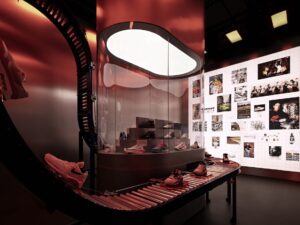Vadim Otto Ursus uses old cultural techniques to cook sustainably and spectacularly. We visit his Brandenburg taste laboratory.
It immediately catches the eye, walking through the garden: a fruit press made of light-colored wooden slats and tomato-red metal struts. Next weekend, it will be used for the first time and the juice pressed within it will be sold in the restaurant Otto in Berlin. Chef Vadim Otto Ursus says: “Our goal isn’t to be self-sufficient. If I had a great pear juice producer, I would buy from him. But since the trees around our property are full of fruit that would otherwise rot, we’re making something out of it.” Working with what’s there, making a region visible and palatable, that’s Ursus’ approach and his conviction. And, most importantly: In all of this, don’t forget the pleasure of enjoyment.
Ursus’ tasting laboratory is located in Buchholz, about a forty-minute drive southwest from Berlin. The cobblestone road leading to the property is unsuitable for city cars. Wet grass on your bare feet, a more or less non-functioning cell phone network, and eggs from your neighbor. It’s an idyllic place, something from a countryside magazine, with shady trees, a small greenhouse and a terrace with a retro sunshade. This includes a table that offers enough space for spontaneous guests. There is cheesecake and baked nut crescents. Now and then, the assistant’s greyhound puppy yowls. This is where Vadim Otto Ursus works on the future of cooking, undisturbed, where it can and should be as sustainable as possible



